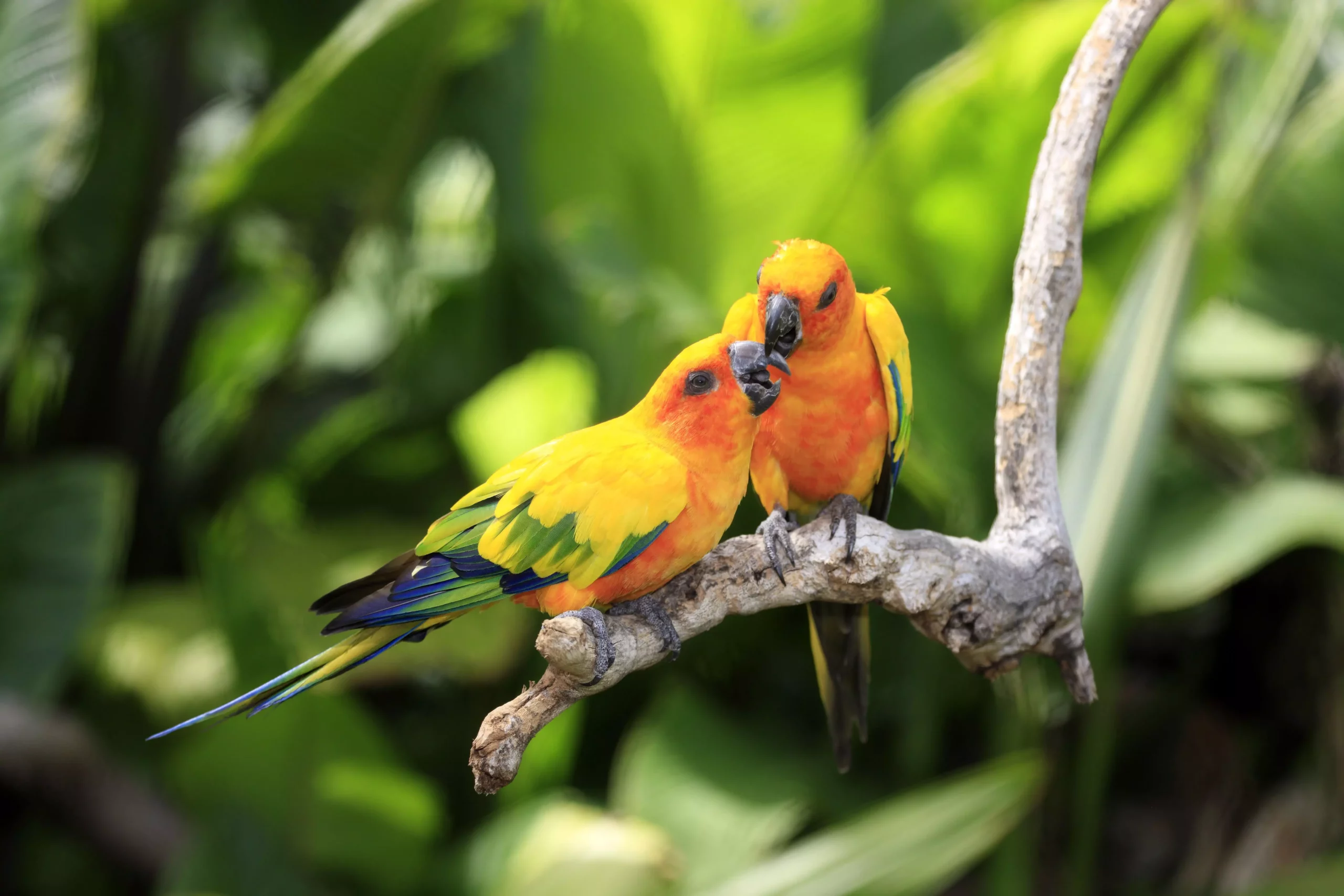When it comes to avian companions, few are as captivating as red parrots. Their striking plumage and charismatic personalities make them wonderful pets for the right individuals. However, owning a red parrot necessitates a thoughtful understanding of their unique care needs, behavioral traits, and environmental requirements. This article delves into the salient aspects of various red parrot species, highlighting their care requirements and the enriching companionship they can provide.
Scarlet macaws are among the most recognizable parrot species, known for their brilliant red feathers and impressive size. With a length of approximately 35 inches, these stunning birds need adequate space to thrive both physically and mentally. Their vibrant red plumage is adorned with splashes of yellow and blue across their wings and tail, presenting a spectacular visual feast. As highly intelligent creatures, they demand not only daily physical exercise but also ample mental stimulation to avoid boredom, which can lead to unruly behavior.
Adopting a scarlet macaw is a lifelong commitment, as these birds can live for over 50 years—a fact that should not be taken lightly. Potential owners should interact with macaws through local rescues to understand their personalities and social needs better. While affectionate and engaging, scarlet macaws can also be noisy, which might pose a challenge in shared living environments.
The red-and-green macaw, despite its name, is primarily characterized by its deep red coloration. Ranging from 26 to 40 inches in length, this bird also features distinctive markings, including green wings and a teal tail. Like their scarlet counterparts, these macaws require specialized care that involves a spacious habitat and the socialization needed to flourish.
These birds are known for their playful, engaging nature, but they require dedicated caregivers who can meet their extensive social and psychological needs. New owners should conduct thorough research or seek mentorship from experienced parrot owners to ensure they are equipped to provide a suitable environment for these vibrant avians.
The eclectus parrot is unique among red parrots due to its sexual dimorphism—males and females exhibit strikingly different feather colors. Males are dressed in captivating emerald green, while females take on a vivid red appearance, complemented by blue accents on their underparts. Originating from Australia, these birds are cherished for their docile demeanor and friendly nature.
Potential eclectus owners should note that these parrots thrive on social interaction and require a significant amount of time with their owners to remain sociable. As they can develop bonds akin to family members, fostering early social connections through regular handling is vital for these birds to exhibit their best behaviors.
Interestingly, crimson rosellas are smaller than the previously discussed species, generally measuring around 10 to 14 inches in length. With their vibrant red plumage and subtle blue accents, they offer a visual delight. While these birds may not be as affectionate as other parrots, they enjoy social interactions and can learn to whistle, providing their caretakers with a unique form of entertainment.
Despite their beauty, crimson rosellas can be challenging to tame fully. Adequate handling from a young age is necessary to foster a friendly disposition. Ongoing social interaction remains essential throughout their lives, and they need plenty of opportunities outside their cages to thrive.
Often overlooked in discussions about parrots, canaries present an interesting case. Known for their typically yellow feathers, selective breeding has yielded various colors, including red. These small birds, measuring 5 to 8 inches in length, possess notable melodic abilities, but only male canaries produce these enchanting songs.
Canaries are not generally considered cuddly pets, making them ideal for individuals who prefer a more hands-off approach to companionship. They require ample space in a cage to flutter around as their exercise primarily occurs within the confines of their enclosure. Their sweet songs provide soothing background music, making them fantastic pets for apartment dwellers.
The African grey parrot, renowned for its intelligence, does feature notable red accents in its tail feathers, making it a valuable addition to the conversation about red parrots. Adult African greys can range from 9 to 14 inches and possess a striking gray plumage that demands attention. These birds are exceptional problem solvers, requiring stimulating toys and activities to keep their sharp minds engaged.
Moreover, African greys hold a reputation for being excellent mimics and can develop expressive vocabularies, often engaging in captivating interactions with their owners. However, because of their high intelligence, they are prone to boredom, which can result in destructive behavior if not provided with enough mental and physical challenges.
Red parrots are a breathtaking and diverse group of birds, each displaying unique characteristics and requiring dedicated care. Understanding each species’ specific needs is essential for potential owners hoping to invite one of these striking birds into their lives. Whether it’s a scarlet macaw, an eclectus parrot, or a playful African grey, these magnificent creatures offer companionship and joy for those willing to invest the time and effort. By making informed decisions and embracing the challenges of parrot ownership, you can foster meaningful and lasting relationships with your avian friends.

